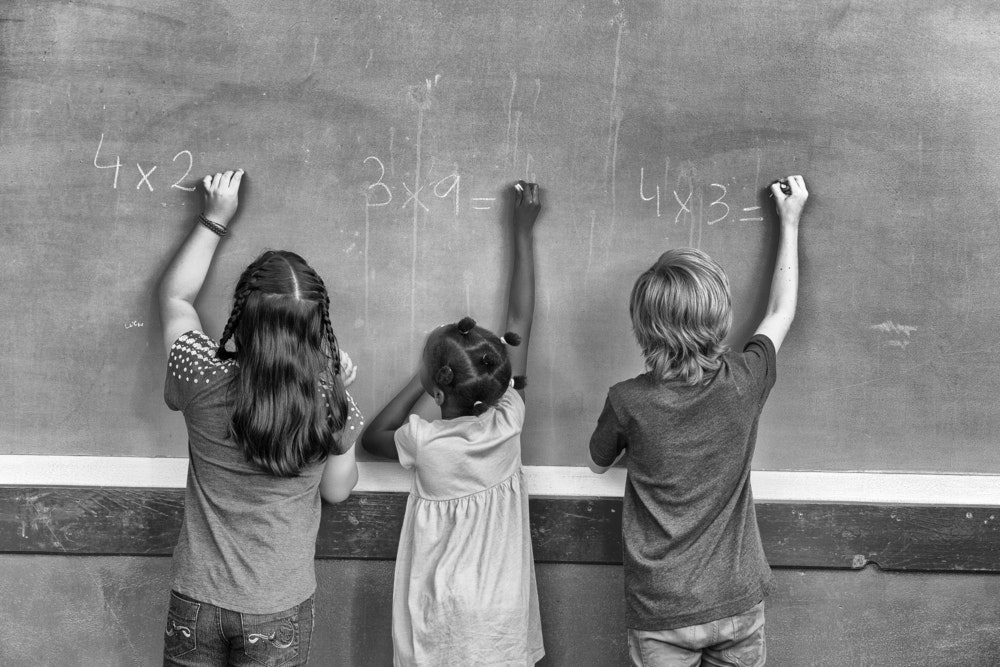
Nov 14, 2017
The positive benefits tutoring has on students who are falling behind.
While there are many factors that can affect a student's ability to keep up in the classroom, research has shown that the growing U.S income gap is a major contributor. It has become increasingly clear that students in poorer communities are not receiving the same opportunities as wealthier students to excel academically, and much of that has to do with lack of access to resources created to address individual needs. How can we work to solve this problem? A recent study has shown the positive results of tutoring intervention that create lasting, beneficial outcomes for these students. Read on to learn more about what the research says on tutoring and how it can act as a successful intervention.
A sizeable difference exists between the amount and quality of resources available to students of different socioeconomic communities, and those differences can often be dramatic. Perhaps the most significant issue poorer students face is the lack of individualized attention in schools. Classrooms in poorer areas are more crowded. A lesser amount of resources and funding in poorer communities means there is not as much available space within schools. Because of the overcrowding, it’s more difficult for educators to spend a significant amount of one-on-one time with each student. It also prevents them from recognizing certain indicators of a child’s falling performance early on and before it becomes a significant problem. Furthermore, staffing within poorer school systems can be an issue. This can be due to teachers electing to work at schools with more resources or because of higher turnover rate. Because of this, there are simply less educators available to give attention to each student. It also means that it’s not as easy for students to develop long term relationships with students -- relationships that often allow for recognition of problematic signs based on personal understanding of a child. These factors, along with others, can greatly hinder a student’s performance.
When compared with wealthier schools, it makes sense that it’s not as easy for students in poorer schools to keep up on their own. Parents of students in wealthier communities will often be notified of potential academic issues early on. This, along with a greater amount of income, allows for earlier intervention, which often means the problem can be corrected much more quickly. Hiring a tutor has been one of the first lines of defense when academic performance dwindles but, historically, it has been accessible only for wealthier families due to cost. With the increasing amount of research on the benefits of tutoring, some programs have recently emerged that give poorer students access to this resource. The benefits have been made clear, meaning it may soon be much easier for students in poorer communities who have fallen behind catch up with their peers.
The benefits of tutoring on student academic performance have been made apparent through a great deal of research. Researchers found that young children who worked with tutors substantially improved academic performance. The number of special education referrals and learning problems were also greatly reduced. Another study looking at improvement of reading comprehension showed that students who received tutoring services quadrupled their fluency in eight weeks. A meta-analysis of 65 studies examining the effectiveness of tutoring found that academic performance improves along with attitudes of students toward the subject matter. There are ample studies supporting the advantages of tutoring on academic performance but, until recently, there have not been a great deal of suggestions on how poorer students could easily gain access to these services.
In a recent article, Politico spotlighted a new study that showed promising results specifically for those students who fell behind in school. Working with 9th and 10th grade students in the poorest neighborhoods of Chicago, researchers introduced a tutoring system and measured the effects on academic performance. The results were were significant and exciting. The most affected subject was math. Fewer students with access to the tutors fewer students failed, and an improvement of almost a full grade letter was shown in both test scores and grades. Non-math subjects also showed improvement. While tutoring has historically led to better grades, the novel component to this study lies in the cost. This tutoring program, originally started at Boston’s Match Charter School, is affordable and accessible to poor communities and not very difficult to scale. These results indicate how beneficial expansion of this program would be and how, soon, the achievement gap could potentially get closer to closing.
To keep up with the latest education research, join Clark and follow along with the blog.
